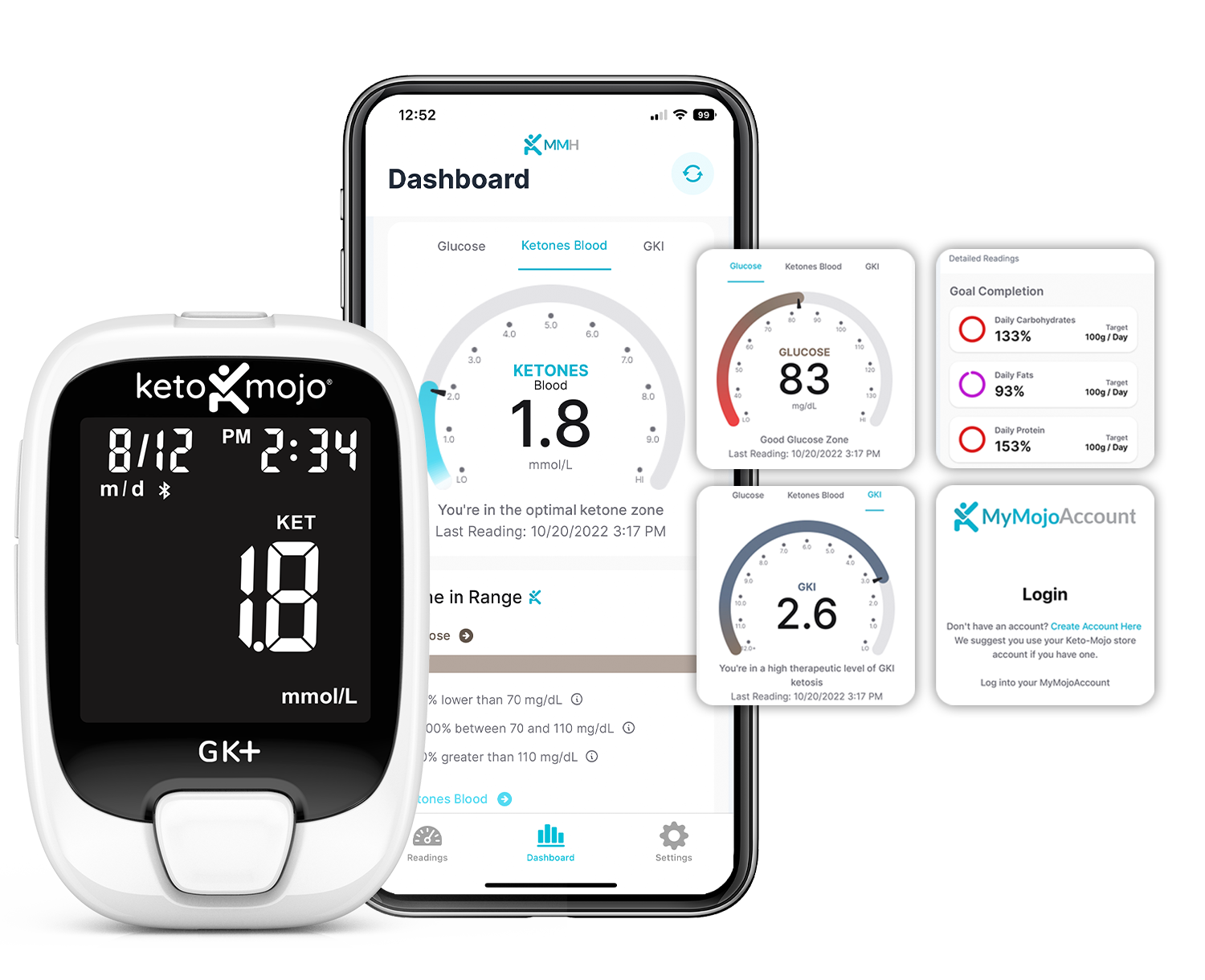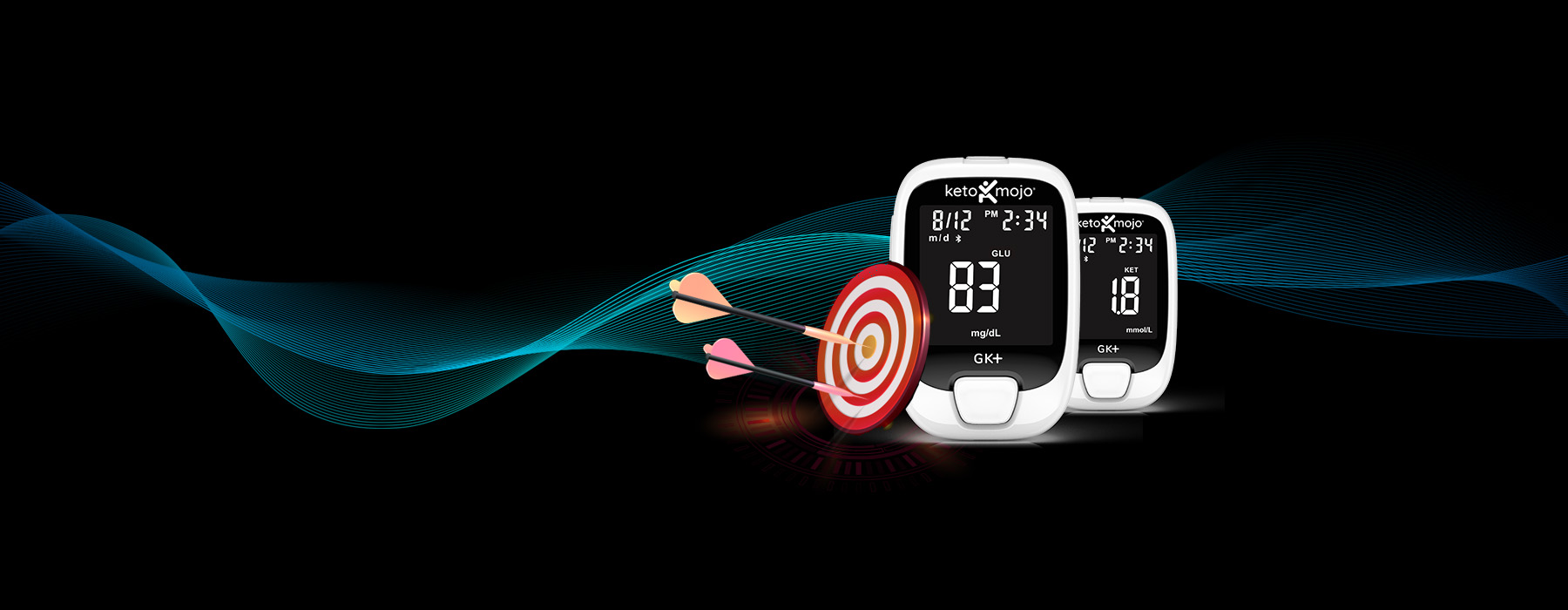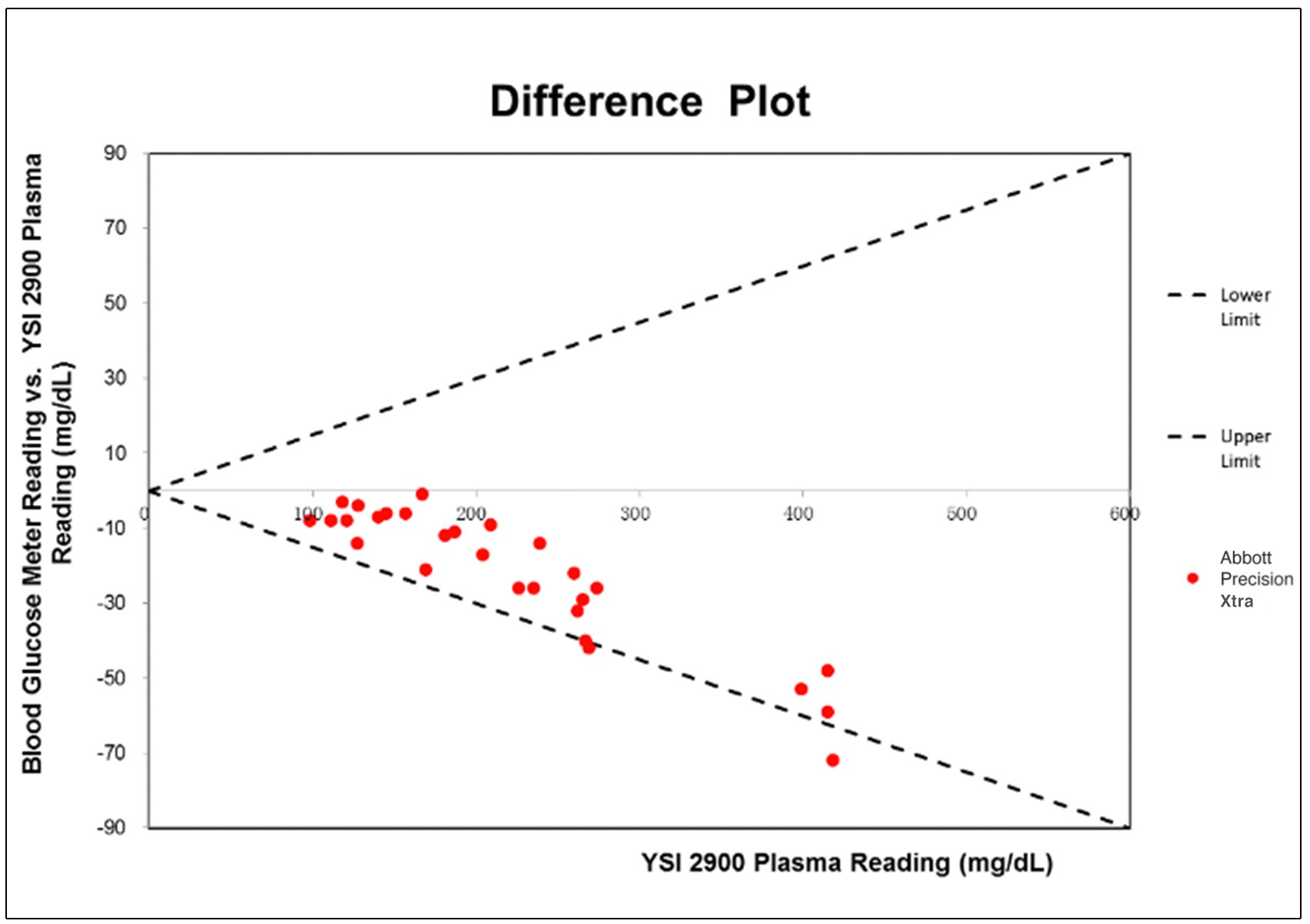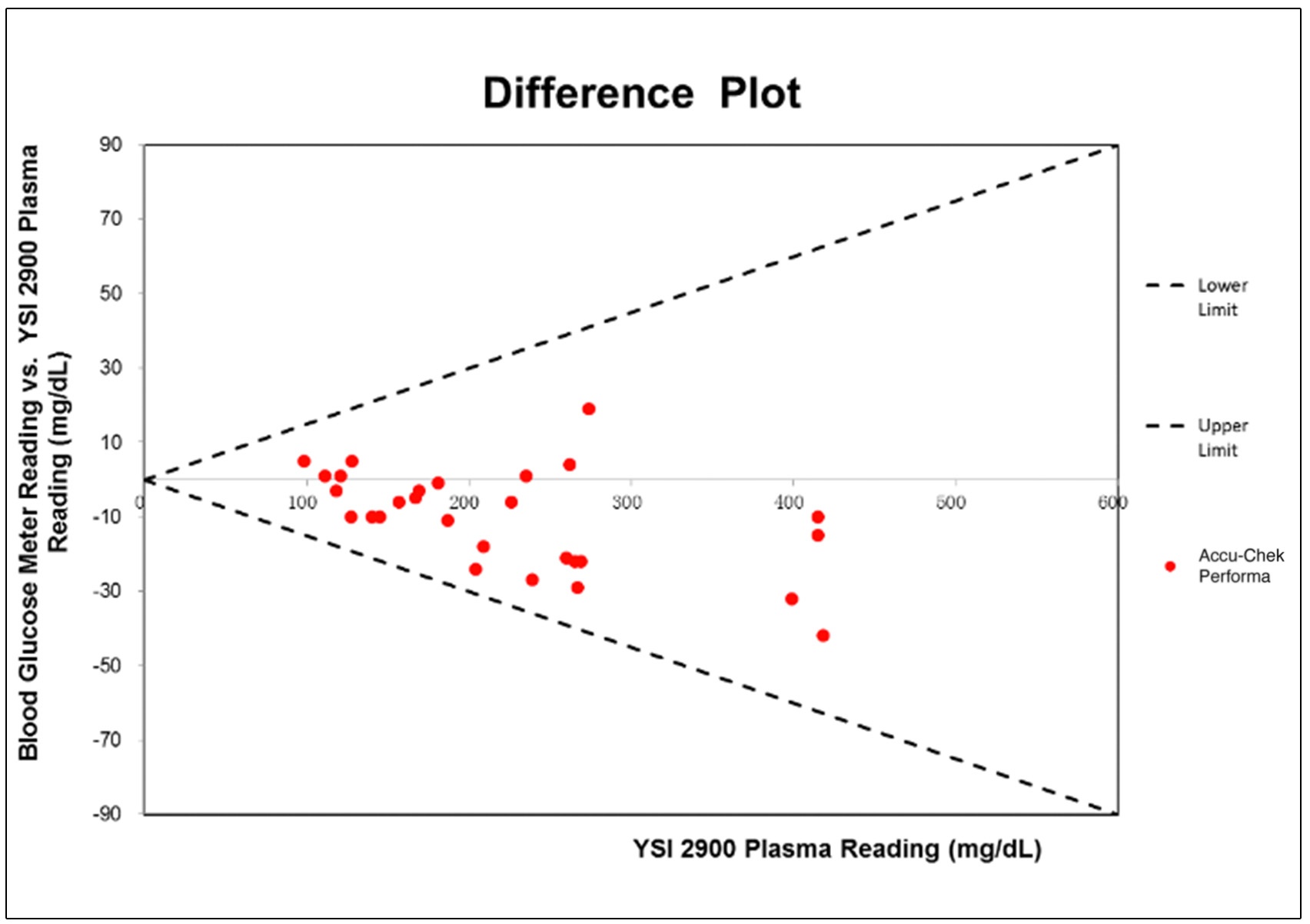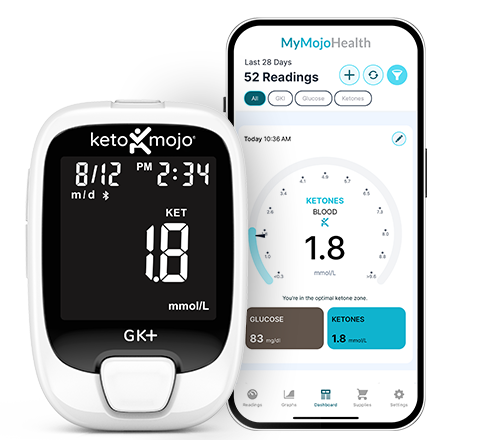
How Accurate are Glucose & Ketone Meters?
Blood glucose and ketone meters are extremely valuable tools if you have diabetes, follow the ketogenic diet, or simply want to improve your metabolic health.
While at-home meters aren’t as accurate as “gold standard” lab tests, they’re still accurate enough to ensure you make safe decisions about glucose management–and they’re also strictly regulated by the FDA and other governing bodies as medical devices.
If you’re feeling doubtful about the accuracy of your meter, this guide has the facts to help put your mind at ease.
But just as importantly, you’ll also learn how to check your meter for accuracy using a control solution if necessary, as well as the most common factors that can cause inaccurate readings (and how to prevent that from happening).
Keep reading to learn the truth about meter accuracy, how accuracy is defined, how at-home meters compare to lab tests, how to test accuracy, and more.
[1]
Accuracy Is a Technical Term Defined and Regulated by the FDA
In the United States and most other countries (including those in the European Union), over-the-counter glucose meters are regulated as medical devices and have to meet strict requirements before going to market.
Under FDA regulations, all blood glucose meters must meet or exceed the following accuracy standards to meet a 510k certification:
- 99% of all results must be within +/- 20% of a validated laboratory-based glucose measuring method
- 95% of all results must be within +/- 15% of a validated laboratory-based glucose measuring method
As an example, if the laboratory reference test for blood glucose showed a result of 100 milligrams per deciliter (mg/dL), then a self-monitoring glucose meter would need to show 99% of results between 80-120 mg/dL and 95% of results between 85-115 mg/dL for the same sample.
The FDA also requires manufacturers to demonstrate precision (repeatability of results) for different glucose concentrations between 30-400 mg/dL to help ensure the meter performs adequately across the entire spectrum of possible results (from dangerously low, to normal, to dangerously high).
Along with testing meters, manufacturers also have to show their glucose strips are accurate, and must test strips from all batches and also keep an archive of strips in case a problem comes to light into the future.
In other words, by the time you purchase a glucometer and strips, the manufacturer has done everything possible to guarantee their products are safe and effective for the purpose of monitoring your blood glucose and using the results to make decisions.
On the other hand, stand-alone blood ketone meters are not strictly regulated in the same way as glucometers, but combination glucose and ketone meters must meet higher standards than ketone meters.
Therefore, if you want the most accurate blood ketone readings possible, be sure to choose a 510k approved FDA-compliant glucose-ketone meter rather than a non-regulated meter that only reads ketone levels. Generally, ketone only meters do not need to meet the same stringent 510k FDA standards for glucometers so using a glucose-ketone meter ensures greater levels of assurance.
[2]
No Meter Is as Accurate as a Lab Test or Venous Blood Draw
Keep in mind that the strict regulations for glucose meters (and strips) ensure they’re accurate enough to help you make the correct decisions, safely and consistently, based on your blood glucose levels.
That said, no self-monitoring blood glucose test system is as accurate as a lab test, for several reasons.
First of all, glucose meters use very small samples of your blood that come from a fingerstick blood droplet. This blood is called capillary blood because it comes from your capillaries.
Your capillaries are responsible for delivering blood directly to the tissues in your body, and your metabolism can more readily affect the glucose content of capillary blood compared to other sources.
Unlike home glucometers, medical lab tests use venous blood drawn directly from a vein. Venous blood is more representative of your body’s circulating glucose levels and is typically lower than glucose levels from capillary blood.
The sample size also makes a significant difference in accuracy and precision. A glucose strip reservoir is typically less than one microliter, or under one thousandth of a milliliter.
In contrast, lab tests analyze blood samples around 0.5 milliliters, 500 times larger than the capacity of a glucose strip reservoir.
And as with any measurement, a larger sample size yields more reliable results. The contents of your blood (including blood sugar) are not 100% uniform, but are distributed somewhat unevenly, meaning that a smaller sample is more likely to show a difference from your average levels compared to a larger sample.
Finally, there’s a huge difference between home equipment and lab equipment.
Glucose meters cost approximately as much as an oil change for your car (and report results in 5 seconds), while the “gold standard” test, gas chromatography-mass spectrometry (GCMS), uses instruments that cost between $80,000-$400,000 (and takes at least 15 minutes to report results).
The next step down in lab equipment used to measure glucose, like the YSI bench analyzer used in FDA 510k submissions, costs approximately $25,000.
GCMS tests or bench analyzers also require a phlebotomist or nurse to draw your blood, as well as a lab technician to process the blood sample and interpret the results.
[3]
High Quality Consumer Glucose & Ketone Meters Are Accurate Enough
It would be wonderful if consumer-grade glucose meters could rival the accuracy of lab-grade GCMS equipment.
In reality, though, they’re still accurate enough for their intended purposes.
The most important role of a glucose meter is risk management by assisting acute care decisions around blood sugar, such as detecting dangerously low or dangerously high levels that require immediate attention. It’s also used in assessing ongoing needs for exogenous insulin to maintain healthy blood glucose levels.
And by virtue of meeting the FDA risk management standards for making critical decisions, home glucose meters are also accurate enough for:
- Tracking trends in glucose over time (for example, fasting morning glucose) to measure your metabolic health,
- Understanding your response to a meal or specific food by testing pre and postprandial glucose for people with diabetes or who are on the ketogenic diet, and
- Calculating your glucose-ketone index (GKI) to ensure you’re in a state of therapeutic ketosis for managing medical conditions.
And finally, unlike lab instruments that occupy an area the size of a large closet and require specially trained personnel to operate, glucometers are portable and easy to use–you can keep them nearby and use them in situations where a lab test would never work.
[4]
Comparing Results from Different Brands of Meters
If you own more than one type of meter, or have friends or family members who own their own glucometers, you may be tempted to compare results from different brands of meters.
Unfortunately, this practice is not a reliable way to compare accuracy.
It’s not widely discussed, but at Keto-Mojo, we’ve discovered through internal testing that some brands of glucose meters provide lower results than lab results in general, even if the results are still technically within the FDA’s acceptable accuracy range. That is, they skew measurably and consistently towards the very bottom of that range.
You can view the actual data by reading down to the bottom of this article, click here.
While meters with a tendency to read low are still considered accurate enough for making appropriate care decisions (since they meet the accuracy standards), they sometimes cause problems, such as:
-
- when people switch from a meter that skews low to one that doesn’t, they may worry that their glucose management strategies aren’t effective, or
- sometimes people switch from or compare meters, then assume the higher reading of the two must be inaccurate or defective.
It’s generally true that people prefer low readings to high ones for a lot of reasons, especially because lower readings suggest effective blood glucose management and good metabolic health. The tendency to accept data or results that fit our preferences is known as confirmation bias, and no one is completely immune to this form of bias.
However, just because one meter consistently reads lower than another doesn’t make it more accurate, valid, or useful than another meter. On average, the meter that doesn’t skew low may actually be more likely to give an accurate reading.
Overall, what matters the most is staying with one trustworthy meter, making the right short-term glucose management decisions, and monitoring your metabolic health trends over time.
[5]
Comparing Back-to-Back Results
Intuitively, it may seem that comparing back-to-back results from the same glucose or glucose-ketone meter would be a helpful way to determine its accuracy or to receive more accurate readings, but that’s actually not the case.
(If you want to know the best way to validate the accuracy of your glucose-ketone meter, that’s covered in the section directly below this one.)
First, as we’ve discussed previously in this article, keep in mind that expected variations in readings will occur:
-
- +/- 15% variation compared to baseline lab results, 95% of the time
- +/- 20% variation compared to baseline lab results, 99% of the time
Therefore, for example, a repeat reading of a lab-validated glucose sample that’s 100 mg/dL would be expected to range from 85-115 mg/dL with a home glucometer.
Beyond that, performing back-to-back readings at home further decreases accuracy for these reasons:
-
- If you use a single sample (blood droplet), prolonged exposure to air skews readings because glucose oxidizes (reacts to oxygen).
- Blood glucose levels can change rapidly in your body, so even samples taken close to one another in time can be different.
- Taking readings using samples from different fingers may result in differences because the glucose content of fluids from different body areas can be different.
In other words, just because back-to-back readings may differ, it doesn’t mean your meter is inaccurate.
If you’re concerned about the accuracy of your glucose meter, keep reading for tips on how to conduct an accuracy test and learn about other factors that could affect accuracy.
How to Check the Accuracy of Your Glucose-Ketone Meter
If you suspect your meter of giving incorrect readings or you think you may have damaged the meter, conduct a control solution test for peace of mind. It will tell you if your meter is working properly, and meets FDA accuracy standards.
At Keto-Mojo, all our meters come standard with glucose and ketone control solutions for testing meter accuracy.
Before using the control solution to test your meter’s accuracy, ensure that you:
-
- double-check the expiration date (our control solutions have a shelf life of 12-18 months unopened, and must be used within 6 months after opening)
- only use test strips that have been properly stored and are not expired, and
- never use other brands of control solutions with Keto-Mojo meters.
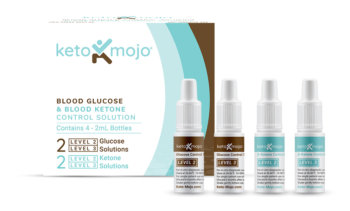
Here’s how to perform the test, or watch the video below:
-
- Prepare 1 glucose strip or 1 ketone strip (depending on which test you’re performing), or both.
- Shake the control solution before use, but very gently to avoid creating lots of air bubbles.
- Place a drop of the control solution(s) onto a clean, non-porous surface such as a ceramic plate.
- Place the strip in the meter and wait for the beep. Place the tip of the strip to the appropriate control solution and wait for your reading.
- Compare the meter reading to the ranges printed on your meter kit box (if that’s where the strips came from) or your test strip box.
- If you’ve misplaced your box with the control solution ranges, you can look them up here.
- If your reading falls within the range, your meter is meeting the FDA standards of accuracy.
Note: Take care when disposing of the control solution sample, as our control solutions contain dye that may stain clothing or surfaces.
If you’re still concerned, you can perform a 5-strip test.
- Prepare 5 glucose strips or 5 ketone strips (depending on which test you’re performing), or both.
- Shake the control solution before use, but very gently to avoid creating lots of air bubbles.
- Place a drop of the control solution onto a clean, non-porous surface such as a ceramic plate.
- Perform back-to-back tests with all 5 glucose or ketone strips using the single drop, noting each reading. (It’s normal and expected to notice a variation in readings.)
- Calculate the average of the 5 tests by adding up all of the readings, then divide the total by 5.
- Compare the average reading to the ranges printed on your meter kit box (if that’s where the strips came from) or your test strip box.
- An ideal or “perfect” test result is when the reading average is in the middle of the control range, but as long as the reading average falls anywhere within the control range, your meter is accurate and is not defective.
As we’ve discussed already in this guide, usually the meter itself isn’t the problem as far as reliability and accuracy.
In the next section, we’ll cover the other factors that can affect the accuracy of at-home glucose and ketone readings.
Common User Errors & Other Variables
If you want your readings to be as accurate and useful as possible, you’ve got to account for the various factors that can affect the reliability and variance of readings.
All of these factors can affect glucose and ketone readings, but unlike glucose readings, ketone readings aren’t usually a matter of life and death. (Although diabetic ketoacidosis (DKA) can be life-threatening, most ketone meters max out at 8 mmol/L, and true ketoacidosis occurs around 16 mmol/L. DKA is also typically accompanied by high glucose levels and symptoms like lethargy, thirst, and excessive urination.)
Here’s a list of things that can affect the accuracy of your readings:
-
- Sweat, oil, sugar, water, or other substances on your hands (always ensure your hands are clean and dry each time you take a reading).
- Temperature, humidity, and altitude can affect readings, especially at extremes (something to keep in mind if you are in a very cold, very hot, or very humid environment).
- Improper storage of strips (store them in the original container and keep them away from moisture, light, and extreme temperatures).
- Out-of-date strips are more likely to give inaccurate readings (always check the expiration date).
- Improper handling or abuse of your meter can affect its functioning and accuracy.
And the following factors don’t directly affect the accuracy or performance of your meter, but could account for unexpected changes in your readings:
-
- Hydration status (dehydration can raise blood glucose).
- Time of day makes a difference in glucose and ketone levels.
- Protein consumption (high protein intake may temporarily reduce blood sugar).
- Exercise (lower intensity aerobic exercise can temporarily lower blood glucose, while more intense anaerobic exercise, such as sprinting or resistance exercise, can briefly raise it).
- Fasting or intermittent fasting can rapidly alter your insulin sensitivity, affecting glucose levels.
- Psychological stress can increase glucose and ketone levels.
- “Hidden” carbs or other non-keto ingredients can increase blood sugar levels on the keto diet.
- Dietary supplements can raise or lower blood sugar, especially in people who take medications, as can medication adjustments (always speak to your doctor before adding a new supplement if you have a medical condition or take prescription medication).
- Taking exogenous ketones, as some people do for therapeutic purposes, is designed to elevate ketone levels.
Paying close attention to all the factors that could affect your glucose and ketone levels can help you obtain more consistent, useful readings.
Next, we’ll review a study that compares the accuracy of the Keto-Mojo GK+ Glucose-Ketone meter to other popular glucose meters.
Study: Blood Glucose Meter Accuracy Comparison
Earlier, we made reference to some popular meters skewing glucose readings low.
The reason we know this is because we make a point of understanding as much as possible about the science of blood glucose and ketone meters, and that includes competitor brands.
We recently conducted a glucometer accuracy study that compared our meter GK+ Blood Glucose & Ketone meter against two other brands of meters that are generally considered to be among the best available meters, the Abbott Precision Xtra and the Accu-Chek Performa
Below, you’ll find a summary of our findings. You can also get a PDF of the full study here.
The graphs below for each meter are called Difference Plots. They are used to compare the results of each meter in relation to the lab results. The dotted lines represent the limits of the FDA accuracy standards, the solid line in the middle is the glucose laboratory test result, and the red dots represent the meter readings in relation to the lab result.
The difference plot essentially shows how close the meter reading was to the actual lab result across a range of readings from low to high, and identifies if there is a tendency toward a meter reading higher or lower than the lab results.
As you can see, all three meters meet the FDA accuracy standards, but two of them tend to skew lower than lab results. The GK+ is calibrated for a more even trend line with lab results, making it a more reliable and “accurate” meter.
One more thing, we talked earlier about confirmation bias—the tendency to believe what you want the reading to be, regardless of whether it is the most accurate.
Here is a case in point. In the full study, there is a chart with all of the sample results taken for each monitor. In one sample, the results were as follows:

At a reading of 435 mg/dL, the Keto-Mojo GK+ reading was higher than the other two meters and the other two readings were closer together. Confirmation bias would suggest that a person taking these readings would assume that the Keto-Mojo GK+ was least accurate. But compared to actual lab results, it was the most accurate. The GK+ was only 4.1% off of the lab result where the other meters were 17.2% and 10% off.
Study takeaways:
-
- All three meters tested were within FDA accuracy standards.
- All three meters skew lower than the lab trend line.
- The Keto-Mojo GK+ meter trend line is closest to actual lab results, with more representative readings as opposed to skewing low.
Final Thoughts
Blood glucose meters are medical devices that can have life or death outcomes, which is why manufacturers take the FDA accuracy standards very seriously.
At Keto-Mojo, we back up the confidence in our meter with a lifetime warranty.
That’s why experts trust Keto-Mojo meters and we have the honor of providing meters for clinical studies at UCSF, Cedars-Sinai, Stanford University, Duke University, and other esteemed institutions.
If you’re concerned that your meter is inaccurate or defective, please be sure to check the accuracy with a control solution as well as making sure you know all the factors that can affect the accuracy and variance of glucose readings.
Thank you for taking the time to learn about meter accuracy. You can purchase a Keto-Mojo GK+ meter here.
Test, Don’t Guess!
The Keto-Mojo meter is the most reliable and accurate glucose & ketone meter on the market and we back that up with a lifetime warranty. Test your level of ketosis with confidence so you can dial in your health goals. Our meter comes with a free MyMojoHealth app to make tracking easier than ever!
